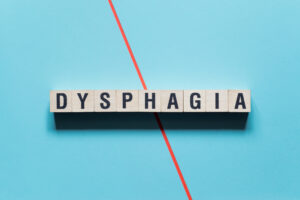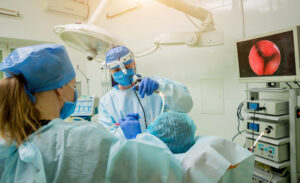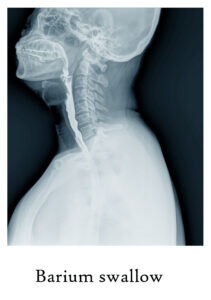Swallowing Disorders

If you are coughing and/or gaging a lot when swallowing liquid or food, then you may have a swallowing disorder (dysphagia.) If you take a drink and always cough because if feels like “it went down the wrong pipe” then you may have a swallowing disorder. If you often have to swallow hard to get food down then you may have a swallowing disorder and you should follow up with a medical professional as soon as possible as it can be a dangerous condition.
Other symptoms include:
- Feeling food is stuck in your throat
- Pain when swallowing
- Frequent heartburn & acid in your throat
- Unexpected weight loss
Additionally, children with swallowing issues might show these symptoms:
- Eats only certain textures
- Spits/throws up a lot
- Hoarse or gurgly voice after feeding
- Fusses/cries when feeding
- Difficulty breast feeding
- Falls asleep when feeding
- Takes a long time to feed
- Difficulty chewing
- Excess drool from mouth
- Stiffens or arches back when feeding
Causes
Swallowing disorders can be seen in all age groups and can be caused by any number of conditions including cancer, developmental disability, oral malformations, and neurological deficits like a stroke or head injury.
Determining where is your Swallowing (dysphaigia) problem
Swallowing occurs in three stages and problems can be seen in one or more of the stages.
- Oral stage – when you suck/chew food & liquid and move into your throat
- Pharyngeal stage – food/liquid starts to down the throat & the airway is closed to keep material out
- Esophageal stage – food/liquid continues down the tube(esophagus) from the throat to the stomach
So, your health professional will observe how you eat, how your mouth moves, and how you swallow to observe any challenges. They likely will also recommend a barium swallow test where you eat and drink with barium in it while getting an x-ray. The barium shows up in the x-ray and the health professional (typically a speech-language pathologist) watches what the food does and where the difficulty is. An endoscopic scope with a camera may also be used down your throat to determine if there are any structural issues.



Possible Treatments
- Diet changes (some are recommended to drink thicker liquids or softer foods)
- Changes in your head and/or body position when swallowing
- Exercises to develop the muscles to swallow and chew
- Medication if the swallowing issue is related to stomach acid or an infection
- Dilation – a tube is used to stretch any narrow areas of the tube (esophagus) that goes to the stomach
- Feeding tube into your stomach for additional nutrients if your not able to eat enough
